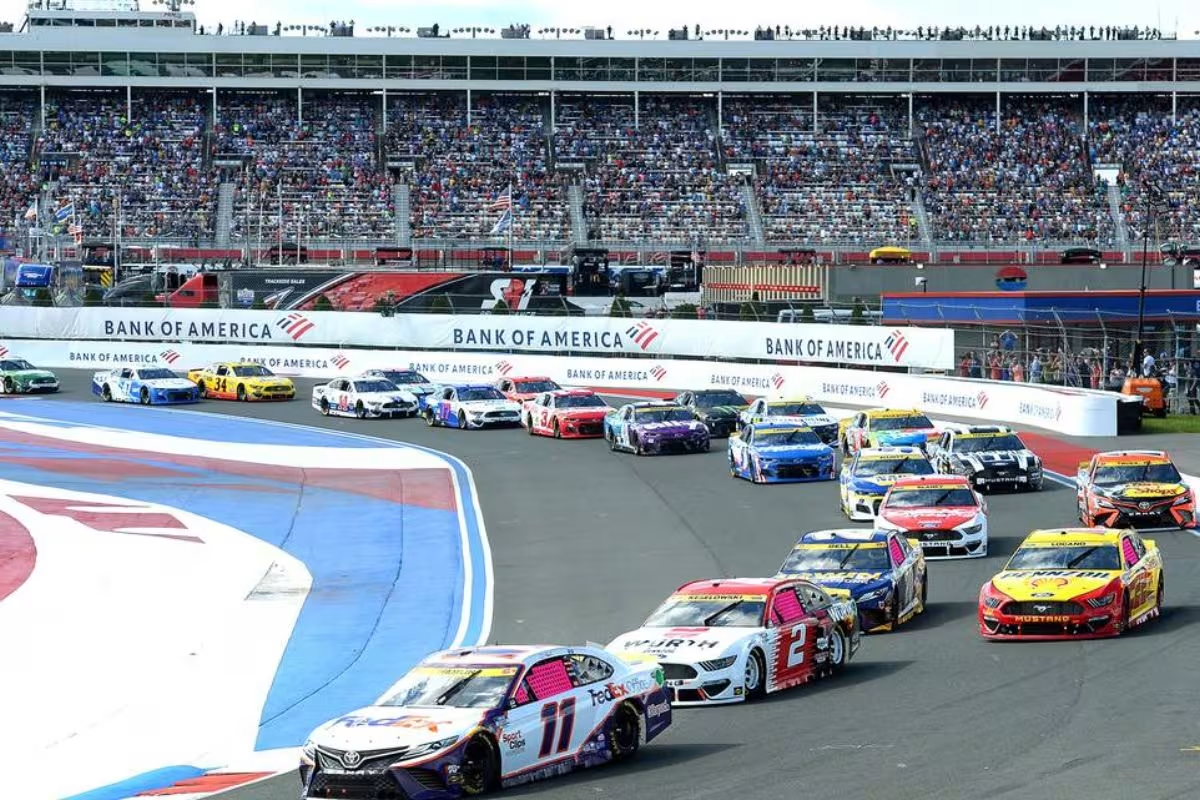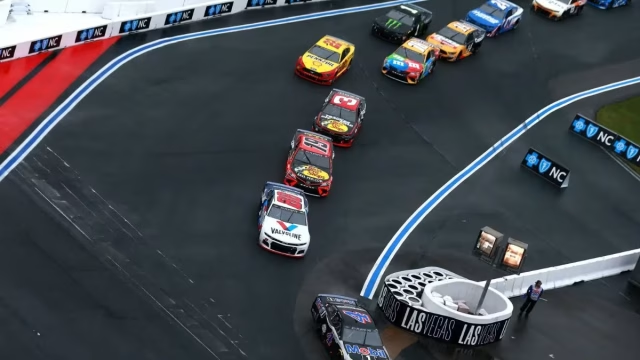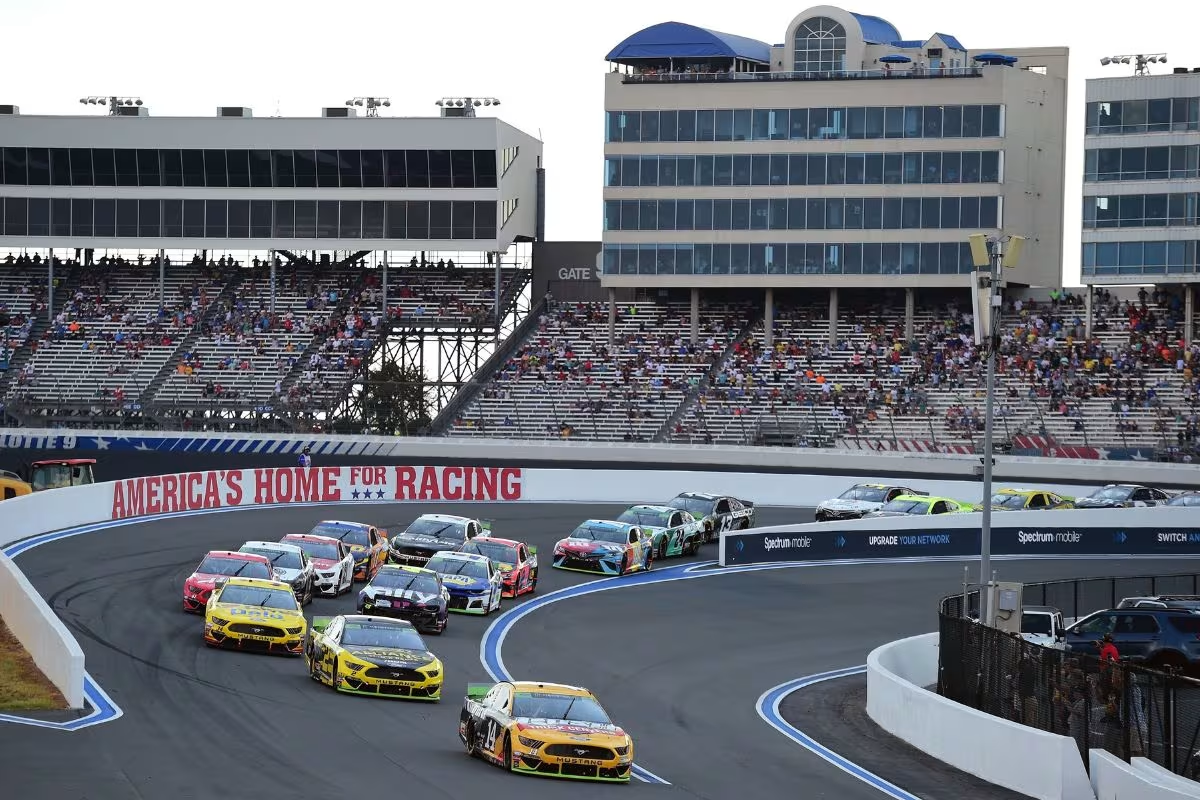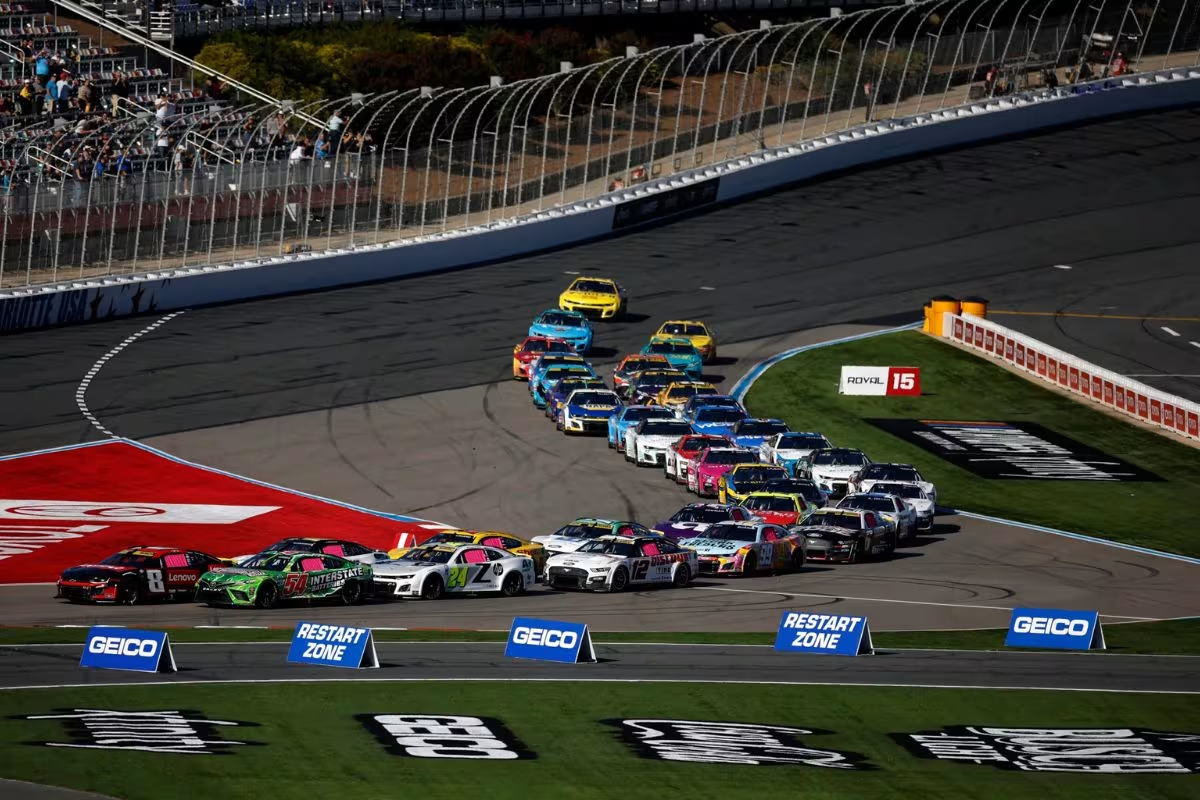Charlotte ROVAL Redesign: The recent redesign of the Charlotte ROVAL, with a particular focus on Turn 7, poses intriguing questions regarding its impact on the playoff landscape. Known as ‘Calamity Corner,’ this newly configured section introduces a tighter radius and a substantial braking challenge that could enhance collision risks, thereby complicating drivers’ strategies. As teams adjust to this unpredictable element, the potential for dramatic shifts in playoff standings becomes evident.
Key Highlights
- Turn 7, known as ‘Calamity Corner,’ is anticipated to significantly increase collision risks and chaotic racing moments during playoffs.
- The redesign focuses on enhancing overtaking opportunities, but it also raises concerns about aggressive driving leading to potential wrecks.
- Historical data indicates a trend of incidents at tight corners, suggesting the new layout may exacerbate wrecks at Turn 7.
- Drivers will need to adapt their strategies for tighter cornering, making risk management essential in navigating the challenges posed by Turn 7.
- Fan excitement is mixed with apprehension over the unpredictability and potential ‘mayhem’ that could unfold during playoff races at the ROVAL.
The Excitement of Road Courses in the Playoffs
In many ways, road courses introduce a unique unpredictability into the NASCAR playoffs that traditional speedways and short tracks often lack. The inherent complexity of road courses, characterized by varied turns and elevation changes, creates a platform where drivers must excel not only in speed but also in technical skill and tactical insight. This unpredictability can lead to surprising outcomes, as demonstrated by the recent inclusion of Watkins Glen, where non-playoff drivers Chris Buescher and Shane van Gisbergen contended fiercely for the win, ultimately showcasing the capricious nature of road course racing.
The results from Watkins Glen clearly highlight this phenomenon; none of the top five finishers were playoff contenders, with only Chase Briscoe and Austin Cindric managing to secure a place in the top ten. Such events emphasize that road courses provide opportunities for underdog performances, which can shift the dynamics of the playoffs considerably. For championship hopefuls, this unpredictability is both a challenge and an opportunity.

Changes to the Charlotte ROVAL
The recent reconfiguration of the Charlotte ROVAL has sparked considerable discussion among teams, drivers, and fans likewise. The alterations, executed by Speedway Motorsports Inc. (SMI), are designed to improve the excitement of road course racing, particularly in the context of the playoffs. With the recent addition of “The Glen,” anticipation for the ROVAL race has surged, as it promises to be a crucial event in the playoff series.
Key modifications to the ROVAL include changes to the layout that are expected to increase overtaking opportunities and raise the inherent challenges that drivers face. One of the most talked-about adjustments is at Turn 7, a section that has become notorious for its difficulty. The reconfiguration aims to create a more dynamic racing environment, potentially leading to unforeseen outcomes and intensified competition among the playoff contenders.
This has elicited mixed reactions, with some teams optimistic about the potential for increased excitement, while others express concerns regarding the unpredictability introduced by these changes. Denny Hamlin’s crew chief, Chris Gabehart, has publicly criticized SMI, suggesting that the reconfiguration might not align with the traditional expectations of the ROVAL race.
Fan reactions have echoed this sentiment, with many expressing shock at the new layout. As teams prepare for this redesigned course, strategies will certainly evolve, focusing on adapting to the improved challenges and seizing the opportunities that these changes present.
Chris Gabehart’s Insights on the ROVAL
Chris Gabehart, crew chief for Denny Hamlin, has voiced his concerns regarding the recent reconfiguration of the Charlotte ROVAL, emphasizing the potential deviation from the expected dynamics of the race. Gabehart’s insights reflect a significant understanding of how track alterations can influence competitive balance and driver behavior.
https://t.co/Cg7ZIcdKyj pic.twitter.com/aRGfeLO6yq
— Matt Weaver (@MattWeaverRA) September 22, 2024
The modifications, particularly the introduction of distinct braking zones, aim to improve overtaking opportunities, as articulated by SMI CEO Marcus Smith. However, Gabehart questions whether these changes will yield the desired outcomes regarding racing excitement and strategy.
“Two distinct braking zones are going to really help the competition and provide great overtaking opportunities. One of the biggest things we’ve heard is about off-throttle time in oval racing. In road-course racing, you want as much of an opportunity as possible for a driver to play with the brake pedal, the gas pedal, and the steering wheel.” – Smith
The reconfiguration of corners, straights, and chicanes introduces a new layer of complexity for teams and drivers. While the intention is to increase competitiveness, Gabehart warns that the unknown factors introduced by these changes could lead to unpredictable race conditions.
Specifically, the adjustments may alter the rhythm and flow of the race, compelling drivers to adapt their strategies on the fly. This adaptability is vital, particularly in the high-stakes environment of the playoffs.
Furthermore, Gabehart’s emphasis on driver interactions with the vehicle—manipulating the brake pedal, gas pedal, and steering—underscores the importance of maintaining the essence of road-course racing amidst the changes.
Turn 7: A Cause for Concern
Concerns surrounding Turn 7 have emerged prominently among drivers and teams following the recent reconfiguration of the Charlotte ROVAL. The introduction of a new Turn 6 has resulted in a sharper hairpin at Turn 7, intensifying the complexity of this essential section. Ryan Blaney, a prominent voice in the paddock, noted that this corner has transformed into the heaviest braking zone on the track. He stated, “You’re going to see a lot of good passes there… but it’s going to be even tighter now.” This sentiment resonates throughout the garage, as teams prepare for the potential chaos that could ensue.
“The heaviest braking zone out there is going to be Turn 7. You’re going to see a lot of good passes there, as far as people getting runs, diving it in there, and taking chances. I thought that corner was tight the way it was before, but it’s going to be even tighter now.” – Blaney
As the playoff season approaches, Turn 7 stands as a critical point where skill, strategy, and situational awareness will be tested to the fullest.
Fan Predictions and Reactions
As expectation builds around the upcoming race at the Charlotte ROVAL, fans are vocal about their hopes for Turn 7, now dubbed “Calamity Corner.” This newly configured section has ignited discussions regarding the potential for chaos, drawing parallels to other notorious road course incidents, such as the dramatic crash involving Brad Keselowski and William Byron at Watkins Glen.
The sharp design of Turn 7 is expected to heighten the likelihood of notable incidents, with fans enthusiastically predicting the resulting mayhem. One fan aptly captured this sentiment, stating, “Turn 7 is gonna be dive bomb city,” reflecting a widespread belief that aggressive tactics will lead to chaos.
The resemblance of the Charlotte layout to the Daytona Road Course, which featured its own set of challenging turns, has also fueled excitement. While the Daytona course produced thrilling races, the sharper nature of Turn 7 suggests an even greater potential for wrecks.
“Wow lol now it’s really a mini Daytona Road course.”
“This should be fun to watch.” – fans reaction
Moreover, the upcoming inclusion of the Truck Series at the ROVAL adds another layer of intrigue. Fans anticipate that the larger trucks will struggle with the tight corner, potentially leading to unforeseen outcomes. As one fan noted, “Next Gen or not that corner is gonna be carnage,” signaling a consensus that collisions are likely in both the Cup and Xfinity Series, along with the Trucks in the following year.
“Next Gen or not that corner is gonna be carnage, Won’t be surprised if trucks have a goofy crash there next year.” – fans’ reaction
The collective anticipation surrounding Calamity Corner emphasizes both the thrill and the trepidation of racing at the redesigned Charlotte ROVAL.
News in Brief: Charlotte ROVAL Redesign
The redesign of Turn 7 at the Charlotte ROVAL introduces a noteworthy variable that could influence playoff dynamics. Dubbed “Calamity Corner,” this challenging turn heightens the risk of collisions, compelling drivers to navigate a delicate balance between aggression and caution. The potential for increased wrecks not only poses a threat to individual race strategies but also stands to disrupt playoff standings and outcomes, thereby amplifying the unpredictability inherent in the postseason racing environment.
ALSO READ: Charlotte Road Course Gets Revamp for 2024 Playoff Race


